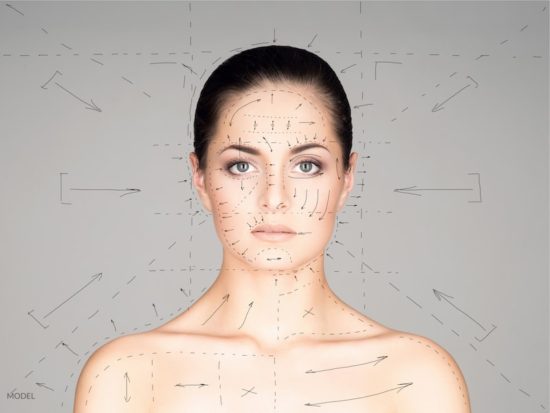4 Minute Read:
When a general surgeon begins a procedure, their primary goal is to correct an internal injury or abnormality that will result in a healthier patient. Most of the time, a general surgeon is not overly concerned with the patient’s external appearance because they are not altering it.

This makes plastic surgery, and, therefore, a plastic surgeon different.
While a plastic surgeon (especially a facial aesthetic surgeon) has to have the same knowledge and understanding of the internal structures as a general surgeon would, including knowledge of the nerves and vessels and how they interact, they also have to be aware of the visible results that the procedure will create.
Technical expertise in surgery is obviously very important and is based on deep knowledge of the form and function of the body, familiarity with the advantages and application of new techniques, accuracy, and dexterity.
Artistic talent requires a high-level appreciation of aesthetics, the harmony of form and structure, and a delicacy of approach.
Therefore, facial aesthetic surgery requires a special kind of artist.
What Is the Correlation Between Art and Science in Facial Plastic Surgery?
First and foremost, plastic surgery is science. It revolves around knowing how to manipulate soft tissues, bones, and nerves to preserve function, blood supply, and feeling.
However, if a facial surgeon does not have an artistic eye, there is no hope of achieving desirable results. Facial surgery relies on subtle curves and contours—the hallmarks of a well-performed facial enhancement.
A good facial surgeon must envision the results of the surgery and make many judgment calls about what is too much or too little. If a surgeon doesn’t make enough corrections, no visible results will be seen; however, if they correct too much, the patient will look overly worked on and unnatural.
Facial surgery is very similar to more traditionally recognized forms of art, such as painting. These processes require significant forethought and planning. With these unforgiving mediums, it’s not easy to simply erase a mistake or go back to try something a different way. Instead, surgeons have to be well-prepared and ultra-aware of every move they make to ensure that the surgical results are beautiful and natural.
In truth, artistic talent is claimed by many, but far fewer surgeons actively pursue in their lives the path of artistic creation as well as surgical excellence.
What Types of Plastic Surgery Target the Face?
Your face is the first feature others notice about you, and it’s the one area on display 365 days of the year. So it makes sense that facial concerns (whether age-related, genetic, or trauma-induced) lead patients to consider plastic surgery.
Facial plastic surgery adjusts the skin, soft tissues, and body structures of the face and neck to create or restore more pleasing aesthetic contours.
Rhinoplasty
Nasal concerns are common among men and women of all ages and ethnicities. While some patients choose rhinoplasty (nose surgery) to address functional breathing problems, many do so to adjust and revise the aesthetic appearance of their nose that was misshapen from birth or injured during a traumatic event.
Fortunately, rhinoplasty can reshape the nose, giving it more pleasing dimensions, easing breathing, or both. Rhinoplasty is one of the most complicated facial specialties to perform as it is a surgery that relies on millimeters of change. Because so much rides on the surgeon’s ability to carefully craft and construct a desirable nasal shape, this is a procedure that requires a true artist.
Facelift
Aging and gravity cause skin to wrinkle and facial contours to lose their sharpness. Facelift surgery can correct these problems to restore youthfulness.
A good and proper facelift is one that goes unnoticed. This doesn’t mean that the results are not noticeable (far from it); it simply means that it should not be evident that surgery has been done. You should look as though you’ve just gotten a great night’s sleep or gotten back from a much-needed relaxing vacation.
To get these types of results, a surgeon must be aggressive where they need to be and conservative where they don’t. This balance will only be met by an artist.
Why Should I Choose Dr. Butler for My Facial Plastic Surgery?
David M. Butler, MD, is a board-certified facial plastic and reconstructive surgeon with over 30 years of experience. In addition, he is a skilled painter, writer, and musician, guaranteeing that both science and art will be considered when it comes to your surgery.
Dr. Butler prides himself on combining and infusing his different skills when performing facial surgery, and the results speak for themselves.
Interested in Learning More?
If you live in the Santa Monica area and are looking for a skilled and artistic facial plastic surgeon, contact Dr. Butler by calling 310-428-0033 or filling out our online contact form.
